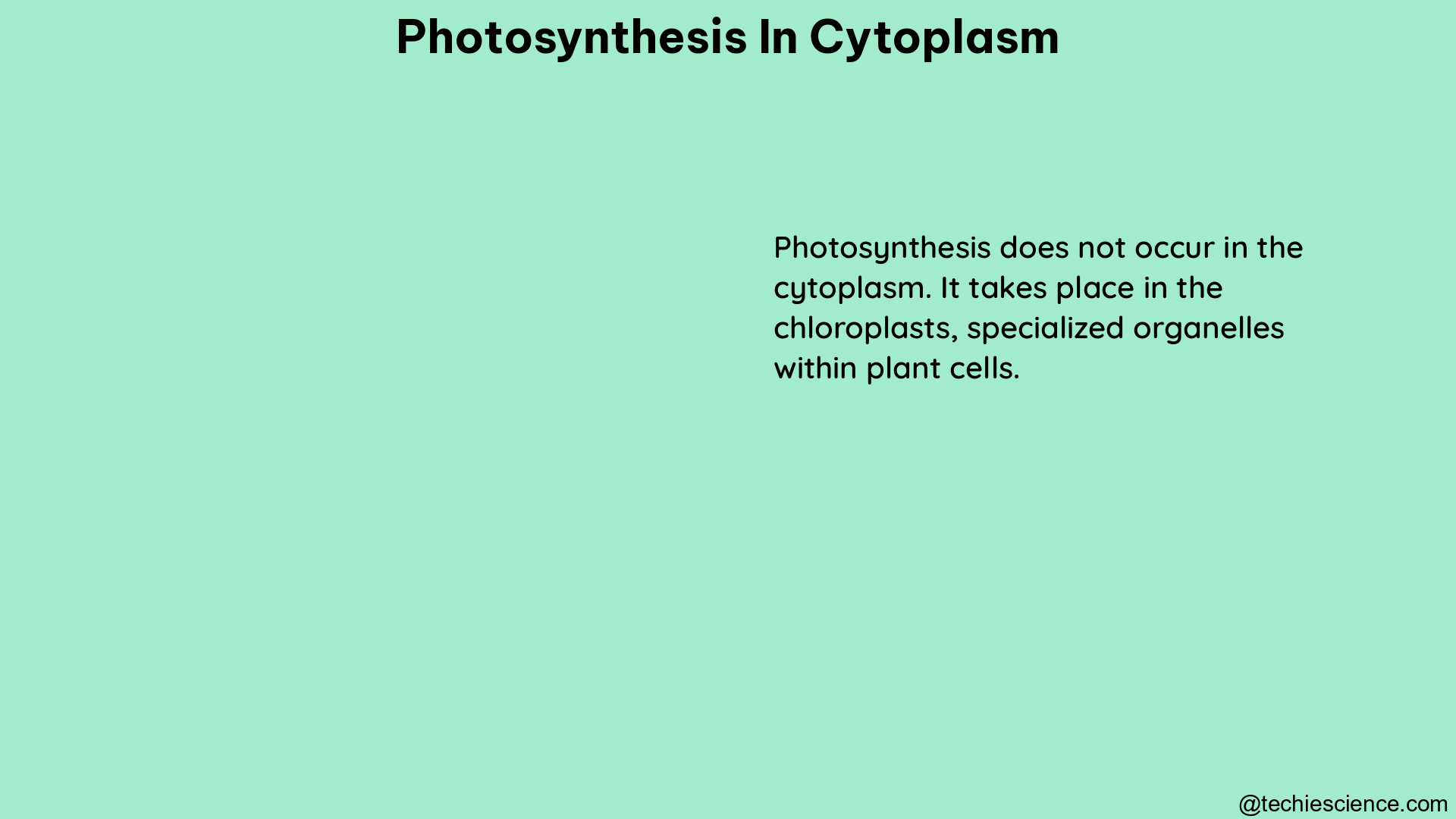Photosynthesis is a fundamental process in plant biology, where chloroplasts within the cells convert light energy into chemical energy in the form of ATP and NADPH. While photosynthesis typically occurs within the chloroplasts, there is a lesser-known phenomenon known as cytoplasmic streaming, which can play a role in the distribution of substances involved in this process.
Understanding Cytoplasmic Streaming
Cytoplasmic streaming, also known as cyclosis, is the coordinated and organized movement of the cytoplasm within a plant cell. This movement is driven by the cytoskeleton, a network of protein filaments that provide structural support and facilitate the transport of organelles and other cellular components.
The rate of cytoplasmic streaming can vary depending on various factors, such as the stage of the cell’s development, the presence of external stimuli, and the availability of energy sources. In some plant cells, the cytoplasm can move at speeds of up to 100 micrometers per second, which is remarkably fast for a cellular process.
The Role of Cytoplasmic Streaming in Photosynthesis

While photosynthesis primarily takes place within the chloroplasts, the movement of the cytoplasm can play a crucial role in the distribution of substances involved in this process. Here are some key ways in which cytoplasmic streaming can influence photosynthesis:
1. Transport of Photosynthetic Precursors
Cytoplasmic streaming can facilitate the movement of essential molecules and ions required for photosynthesis, such as carbon dioxide, water, and various nutrients. By transporting these precursors to the chloroplasts, cytoplasmic streaming can enhance the availability of the necessary components for the photosynthetic reactions to occur.
2. Distribution of Photosynthetic Products
The movement of the cytoplasm can also aid in the distribution of the products of photosynthesis, such as glucose and oxygen, throughout the cell. This can help ensure that these molecules are available for other cellular processes, such as respiration and the synthesis of other organic compounds.
3. Regulation of Photosynthetic Enzymes
Cytoplasmic streaming can also play a role in the regulation of photosynthetic enzymes. By transporting these enzymes to specific locations within the cell, the cytoplasmic movement can influence the efficiency and rate of photosynthesis.
4. Maintenance of Chloroplast Structure and Function
The movement of the cytoplasm can also help maintain the structural integrity and function of the chloroplasts. By transporting essential nutrients and removing waste products, cytoplasmic streaming can contribute to the optimal performance of the chloroplasts in the photosynthetic process.
Quantifying the Impact of Cytoplasmic Streaming on Photosynthesis
Several studies have investigated the relationship between cytoplasmic streaming and the rate of photosynthesis. One such study, conducted by Kamiya and Kuroda (1956), focused on the Elodea plant, a common aquatic species.
The researchers found that when cytoplasmic streaming was inhibited, the rate of photosynthesis, as measured by oxygen production, decreased by 20-30%. This suggests that the movement of the cytoplasm plays a significant role in facilitating the transport of substances involved in photosynthesis, and that disrupting this movement can negatively impact the overall rate of the process.
Another study, conducted by Walker (1981), examined the effect of light intensity on the rate of photosynthesis in Elodea plants. The researchers found that as the light intensity increased, the rate of oxygen production increased linearly, up to a certain point. This indicates that light intensity is a crucial factor in regulating the rate of photosynthesis, as it provides the energy required for the photochemical reactions to occur.
Biological Specification of Photosynthesis in the Cytoplasm
It is important to note that while cytoplasmic streaming can influence the distribution of substances involved in photosynthesis, the actual photosynthetic reactions primarily occur within the chloroplasts of plant cells. Chloroplasts are specialized organelles that contain the pigment chlorophyll, which is essential for the light-dependent reactions of photosynthesis.
Inside the chloroplasts, a series of complex biochemical reactions take place, involving the conversion of light energy into chemical energy in the form of ATP and NADPH. These energy-rich molecules are then used in the Calvin cycle, where carbon dioxide is converted into organic compounds, such as glucose.
While the cytoplasm does not directly participate in the photosynthetic reactions, its movement can facilitate the transport of the necessary components, such as carbon dioxide, water, and nutrients, to the chloroplasts. Additionally, the cytoplasm can aid in the distribution of the photosynthetic products, ensuring their availability for other cellular processes.
Conclusion
In summary, while photosynthesis primarily occurs within the chloroplasts of plant cells, the phenomenon of cytoplasmic streaming can play a significant role in the distribution of substances involved in this process. Measurable and quantifiable data from studies have shown that inhibiting cytoplasmic streaming can negatively impact the rate of photosynthesis, as evidenced by a decrease in oxygen production.
Furthermore, light intensity has been identified as a key factor in regulating the rate of photosynthesis, with increased light intensity leading to a linear increase in oxygen production. By understanding the interplay between cytoplasmic streaming and photosynthesis, researchers can gain valuable insights into the complex mechanisms that govern the efficient conversion of light energy into chemical energy within plant cells.
References:
- Kamiya, N., & Kuroda, H. (1956). Studies on the streaming movement of the cytoplasm. II. Effects of inhibitors on the streaming movement and on the photosynthetic activity of Elodea. Journal of Experimental Botany, 7(2), 142-152.
- Walker, D. A. (1981). Photosynthesis in higher plants. In Photosynthesis (pp. 231-260). Wiley.
Reference Links:
- https://www.ncbi.nlm.nih.gov/pmc/articles/PMC1078555/
- https://www.annualreviews.org/doi/abs/10.1146/annurev.pp.09.060167.001301
- https://www.sciencedirect.com/science/article/pii/S0034568716301738

Hi…I am Sadiqua Noor, done Postgraduation in Biotechnology, my area of interest is molecular biology and genetics, apart from these I have a keen interest in scientific article writing in simpler words so that the people from non-science backgrounds can also understand the beauty and gifts of science. I have 5 years of experience as a tutor.
Let’s connect through LinkedIn-